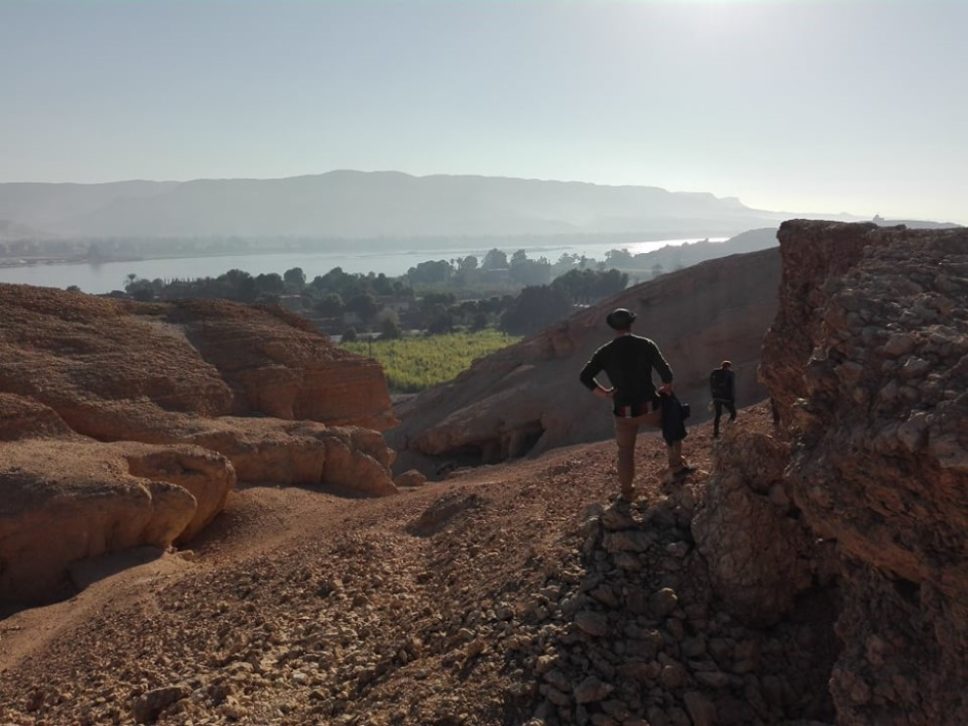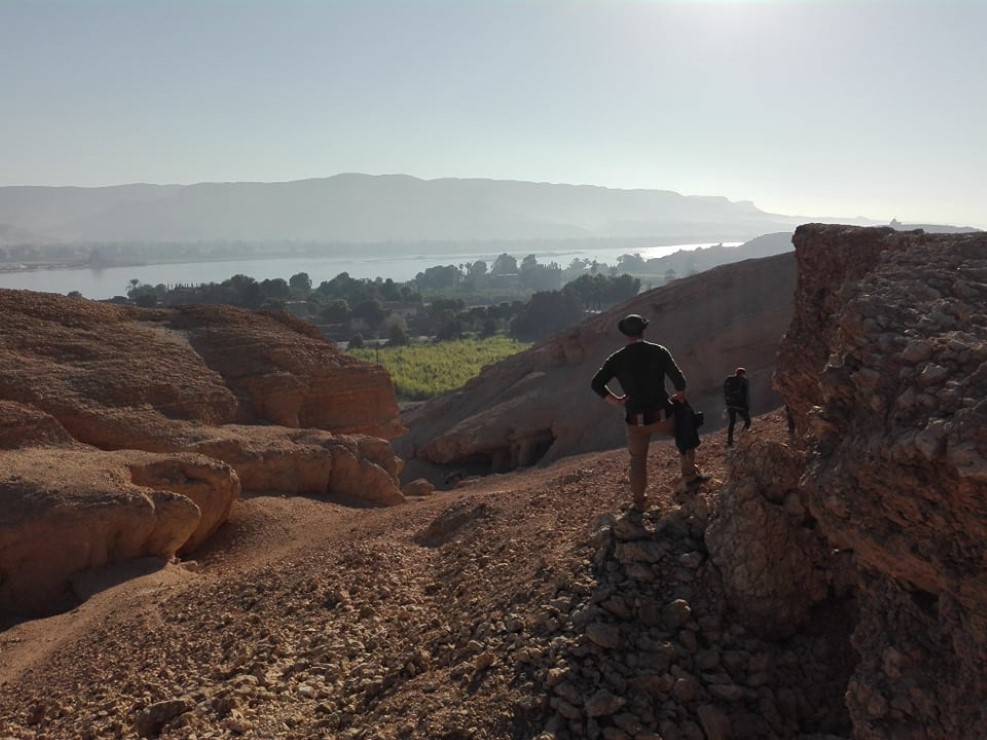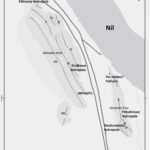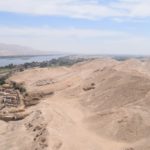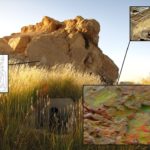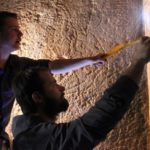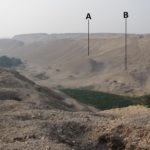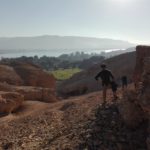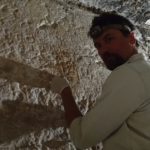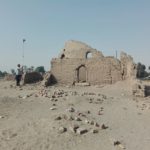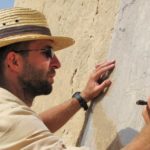Gebelein
Inerti
-
Project name:
Gebelein Archaeological Project
Project logo:
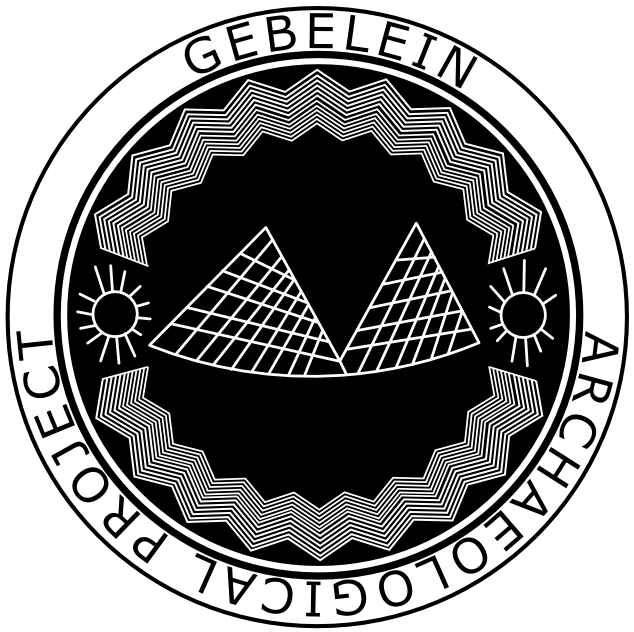
Project website:
Facebook:
-
Type of site:
Settlement, defensive site, burial site, place of raw material acquisition and processing, cult places, remains of communication routes
Location:
Egypt, Gebelein microregion
Dating:
Upper Paleolithic – Middle Ages (30th millennium BC – 12th century AD)
Most interesting finds:
– Tombs of dignitaries from the Old Kingdom and the First Intermediate Period
– The oldest prayers in the temple area known from Egypt
– Reliefs in the chapel of Hathor
– Rock inscription with the name of Ramesses IV
– Prehistoric petroglyphs
History of research:
Dates of PCMA mission’s work:
2013–2020
(the research was continued without the participation of PCMA UW)
Type of research:
Excavations, survey, epigraphic studies, conservation work
Directors:
Wojciech Ejsmond
Co-operating institutions:
– Polish Centre of Mediterranean Archaeology, University of Warsaw
– Macquarie University
– Tokyo Metropolitan University
– Ministry of State of Antiquities of Egypt
Additional information:
Many of the artifacts found in Gebelein can be now seen in museum collections all over the world. Their interpretation suggests that the microregion played an important role in the history of ancient Egypt.
Description of the site and research:
The name Gebelein (“two rocky hills” in Arabic) derives from the characteristic element of the landscape of this microregion, located about 28 km south-west of Luxor. Its ancient name, Inerti, has exactly the same meaning. There are over a dozen archaeological sites in the area of Gebelein, dating from the Paleolithic to the Middle Ages. These include, among others, the remains of two cities, Per-Hathor and Sumenu (in the Greco-Roman period called Pathyris and Crocodilopolis, respectively), four cemeteries, rock-cut sanctuaries, two concentrations of petroglyphs, limestone quarries, and flint mines.
Before the Pharaonic era, the capital of one of the proto-states was established in the Gebelein microregion. A capital of a nome (territorial division) could have functioned here for some time in the 3rd millennium BC. It was certainly the case in the 2nd century BC. In the 6th century AD, the king of the Blemmyes who controlled the area, which was formally under Byzantine rule, had his residence here. The mausolea of the local elite are dated to the reign of the Fatimid dynasty (909–1171).
One of the results of the conducted research was the discovery of numerous petroglyphs dating from prehistoric times to the second half of the 2nd millennium BC. The rock inscription with the name of Ramesses IV and the concentration of graffiti near the Hathor temple are especially worth mentioning. The latter are the oldest Egyptian prayers known from a temple area. They were carved between about 1770 and 1490 BC. A chapel was cut into the rock a dozen meters below these inscriptions. The reliefs dated to the reign of queen Hatshepsut (about 1478–1458 BC) discovered inside underwent conservation. The most recent discovery made by the project’s team is a necropolis of monumental rock-cut tombs from the end of the 3rd millennium BC.
The project also involves the study of the archival documentation of former missions. The topography of Pathyris, i.e., the extent of the area belonging to the Hathor temple and the layout of the streets, was identified in this way. It was also possible to determine where the tombs of the local elite, including priests of Hathor and commanders of a local military unit, were located in the Northern Necropolis.
Gebelein is an important site because of the role it played during the origins of the Pharaonic state, its later administrative function and the fact that the Blemmyan kings had their residence there at the end of antiquity. Original artistic traditions were created here. It is, moreover, full of monuments which have not yet been studied and which may expand our knowledge about the history of ancient Egypt.
Research results:
Season by season – “PCMA Newsletter”:
Ejsmond, W. (2019). Some thoughts on Nubians in Gebelein region during First Intermediate Period. In M. Peterková Hlouchová, D. Belohoubková, J. Honzl, V. Nováková, Current Research in Egyptology 2018, Proceedings, Czech Institute of Egyptology, Faculty of Arts, Charles University, Prague, 25–28 June 2018 (pp. 23–41). Prague.
Ejsmond, W., Wieczorek, D.F., and Wieczorek, A. (2018). Gebelein Archaeological Project 2018: Temple and fortress area on the Eastern Mountain. Polish Archaeology in the Mediterranean, 27/1, 235–244.
Ejsmond, W. (2018). Natural Pyramids of Ancient Egypt: From emulations of monarchs to royal burials. Ägypten und Levante, 28, 169–180
Wieczorek, D.F. and Ejsmond, W. (2018). Anbetungen in Stein – die ältesten zeugnisse persönlicher frömmigkeit. Antike Welt. Zeitschrift für Archäologie und Kulturgeschichte, 4/18, 4.
Ejsmond, W. (2017). The Nubian mercenaries of Gebelein during the First Intermediate Period in light of recent field research. Journal of Ancient Egyptian Interconnections, 14, 11–13.
Ejsmond, W. (2017). Gebelein Archaeological Project 2013-2016. In M.C. Guidotti, V. Rosati, Proceedings of the XI International Congress of Egyptologists, Florence, Italy 23–30 August 2015 (pp. 182–185). Oxford: Archaeopress.
Ejsmond, W., Chyla, M.J., Witkowski, P., Takács, D., Wieczorek, D.F., Xu-Nan, L., Oeters, V., Kuronuma, T., and Grylak, A. (2017). Archaeological Survey at Gebelein in 2014, 2015 and 2016 Seasons. Polish Archaeology in the Mediterranean, 26/1, 239–268.
Ejsmond, W. (2016). Gebelein: An overview. Warsaw: Antiquities of Southeastern Europe Research Centre of the University of Warsaw; Scientific Association for Ancient Egypt ‘KeMeT’ University of Warsaw.
Takács, D., Ejsmond, W., Chyla, J.M., and Witkowski, P. (2016). An erased queen in the Hathor temple at Gebelein. Egyptian Archaeology, 48, 42–45.
Witkowski, P., Chyla J.M., and Ejsmond W. (2016). Combination of RTI and Decorrelation – an Approach to the Examination of Badly Preserved Rock Inscriptions and Rock Art at Gebelein (Egypt). In S. Campana, R. Scopigno, G. Carpentiero, M. Cirillo (eds), CAA 2015. Keep the Revolution Going. Proceedings of the 43rd Annual Conference on Computer Applications and Quantitative Methods in Archaeology (pp. 939–944). Oxford: Archaeopress.
Takács, D., Ejsmond, W., Chyla, J.M., and Witkowski, P. (2015). Hatshepsut’s Speos at Gebelein – Preliminary conclusions on the unpublished temple. Göttinger Miszellen – Beiträge zur ägyptologischen Diskussion, 247, 117–120.
Wieczorek, D.F. (2015). A rock inscription of Ramesses IV at Gebelein. A previously unknown New Kingdom expedition. Études et Travaux, 28, 217–229.
Ejsmond, W., Chyla J.M., and Baka, C. (2015). Report from Field Reconnaissance at Gebelein, Khozamand el-Rizeiqat. Polish Archaeology in the Mediterranean, 24, 265–274.
Ejsmond, W. (2015). Signs in Stones. Archaeological research at Gebelein. Egyptian Archaeology, 47, 7–8.
Ejsmond, W. (2015). Burial of a local ruler at Gebelein? An Interpretation of a Group of Predynastic Artefacts Purchased by J.E. Quibell in 1900. Gottinger Miszellen – Beiträge zur ägyptologischen Diskussion, 244, 39–50.
Ejsmond, W., Chyla, J.M., Witkowski, P., Wieczorek, D.F, Takács, D., Ożarek-Szilke, M., and Ordutowski, M.J. (2015). Comprehensive Field Survey of Gebelein – Preliminary Results of a New Method in Processing Data for Archaeological Sites’ Analysis. Archaeologia Polona, 53, 617–621.
Takács, D., Ejsmond, W., Chyla, J.M., and Witkowski, P. (2015). Hatshepsut’s speos at Gebelein – Preliminary conclusions on the unpublished temple. Göttinger Miszellen – Beiträge zur ägyptologischen Diskussion, 247, 117–120.
Gallery:
-
1. The most important archaeological sites in the Gebelein microregion / Najważniejsze stanowiska archeologiczne w mikro-regionie Gebelein (mapa bazowa J.M. Chyla, oznaczenie W. Ejsmond)
-
2. Gebelein landscape / Krajobraz w Gebelein (fot. W. Ejsmond)
-
3. Concentration of petroglyphs in the southern part of the Western Hill / Koncentracja petroglifów w południowej części Zachodniego Wzgórza (fot. W. Ejsmond)
-
4. Documenting inscriptions on the rock shelf on the Eastern Hill / Dokumentacja inskrypcji na półce skalnej na Wschodnim Wzgórzu (fot. A. Ostasz)
-
5. Studying reliefs in the rock-cut chapel dedicated to Hathor, Lady of Gebelein / Badania reliefów w wykutej w skale kaplicy dedykowanej Hathor Pani Gebelein (fot. P. Witkowski)
-
6. Two pyramid-shaped rocks (A and B) in the central part of the Middle Necropolis / Dwie skały (A i B) w kształcie piramid zajmujące centralne miejsce na terenie Środkowej Nekropoli (fot. W. Ejsmond)
-
7. Studying the remains of the city of Pathyris / Badania pozostałości miasta Pathyris (fot. W. Ejsmond)
-
9. Gebelein landscape / Krajobraz Gebelein (fot. W. Ejsmond)
-
10. The research team and friends / Uczestnicy badań w Gebelein i przyjaciele
-
11. Arkadiusz Ostasz during conservation work in the chapel of Hathor / Arkadiusz Ostasz w czasie prac konserwatorskich w kaplicy Hathor (fot. W. Ejsmond)
-
12. Piotr Witkowski photographing Fatimid mausolea / Piotr Witkowski wykonujący dokumentację fotograficzną Fatymidzkich mauzoleów (fot. W. Ejsmond)
-
13. Dawid Wieczorek during epigraphic work / Dawid Wieczorek w czasie prac epigraficznych (fot. W. Ejsmond)

